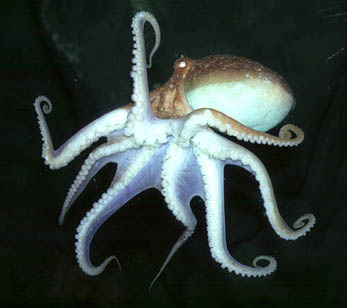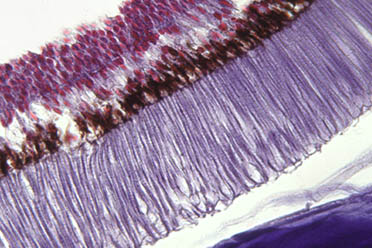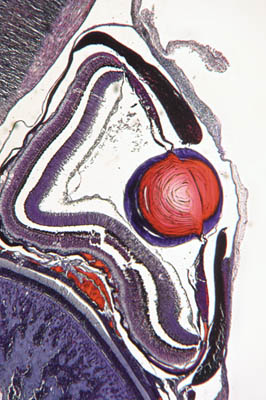| There
is indeed much resemblance between our eyes and those of
an octopus. However, a vertebrate eye is formed as an
outgrowth of the brain, while that of an octopus is
formed by an invagination of the ectoderm and a closer
look shows more differences. This is a striking example of
so-called convergent evolution, which means that a
similar organ with a similar function is formed in quite
unrelated organisms. Studying eyes is difficult enough
for an amateur microscopist, educated as a chemist. I am
consoled a bit by the essential photochemical part of the
process of the visual process. Armed with books about the
anatomy of molluscs I am trying to understand the
structures I am seeing through the microscope. But
standing before a large sea water aquarium with an
octopus in it, clearly looking at me and following me
with his eyes, I am pondering about what this octopus
really perceives of me. I suspect it must be a lot!
|

An octopus,
with its large eyes, looking at me. Its eye is white, due
to the reflection of the flashlight against the pigment
cells behind the retina
|


